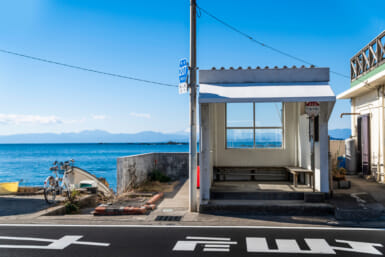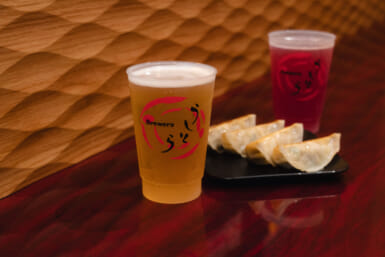by Jeff Manning
When I talk to people about Japanese hot springs or onsen (pronounced “own-sen”), I like to bring up a couple of interesting points. One is that, in my humble opinion, no matter how long you’ve lived in Japan, if you have never been to an onsen, then you’ve never really lived in Japan; you’ve only existed here.
Also, after you’ve been here as long as 1 have, you inevitably begin to get teased a little by the folks back home about turning Japanese. You know, like: “Say, isn’t your hair darker?” or “I think you’ve gotten a little shorter. Must be all that rice you’ve been eating!”
I used to just smile and laugh it off with everyone else, but lately I’ve begun to think there might be some truth to it. For example, now when I’m taking out my friends to an expensive restaurant, I usually think of sushi rather than steak. My passion for American football has, for the time being, been redirected towards sumo. And, finally—and this brings us back to the subject—my need to get away from it all to the Creat Outdoors and commune with nature is more than filled by periodically visiting an onsen.
The Japanese have long had a love affair with hot springs. Centuries before the first gaijin washed up on these shores and created no small stir, monks, samurai and commoner alike were enjoying the blessings of natural refreshment and rejuvenation this volcanically active country has to offer. To this day, the Japanese continue to visit onsen in droves, each with his or her own special reasons.
Some go for the therapeutic value because the thermally heated springs often contain natural chemicals and minerals said to be good for treating a wide variety of physical and mental disorders. Women like the ‘—’cosmetic qualities. Those same chemical properties make the onsen a kind of fountain of youth and can leave skin looking and feeling soft, smooth and young.
Still others are hoping for more of a spiritual lift, a playground of the gods or a 20th-century version of the biblical Garden of Eden where one can quietly meditate the hours away and, with them, the cares of the world. Companies will often plan outings at onsen as a respite from the rigors and every-day stress of the office. These overnight stays usually include parties with karaoke and entertainment by assorted geisha— enough said.
In any case, what I have learned during my brief stay here is what the Japanese have already known for hundreds of years; that an onsen is an almost magical place which can provide you with a totally “Japanese experience” you’ll never forget.
OK, so now you’re fairly convinced but wondering how you might go about finding this ultimate vacation spot. Well, actually there is more than one. In all of Japan, there are estimated to be more than 2,500 onsen, which means you could visit a different spot every week for 48 years (yes, I used my calculator) and never splash in the same pool twice!
So now you say, “Where do I begin?” A good way to get started is to read the book A Guide to Japanese Hot Springs by Anne Hotta and Yoko Ishiguro. This book has a wealth of information, do’s and don’ts, trivia, history and folklore and photographs. Although some of the information has changed (it was printed in 1988), it’s just what the beginner needs on his or her way to becoming an old pro.
My advice is for you to first decide what kind of onsen experience you’d like to have, then choose one or two, depending on your wants, needs and budget. Accommodations run the gauntlet from chandelicrcd western-style luxury hotels to rustic traditional Japanese inns, or ryokan and minshuku. Scenery can be anything from majestic mountain vistas to spectacular ocean views and prices can start as low as ¥7,000 per night, including two meals. But remember, just like everything else in Japan, a visit to an onsen can also be very expensive, so get a price quote before making reservations.
For me, the true onsen experience simply has to include three basic elements: 1) A stay in a traditional ryokan, 2) A dip in an outdoor, open-air bath (rotenburo), and 3) A delicious meal featuring local delicacies (don’t ask; just try it—you’ll like it!).
One of my most enjoyable stays was at Osawa Onsen in Iwate Prefecture, Tohoku, in northeastern Honshu. The lone ryokan, called Sansuikaku, with its creaking wooden hallways and simple architecture and decor, is a quiet, out-of-the-way retreat from the clamor of the city. Once I had changed into my yukata (cotton Japanese robe provided at all onsen ryokan), I did a little exploring. That’s when I found it: the magnificent open-air rotenburo for which Osawa is famous.
Separated from a small river gorge by dark, jagged rocks, the scenic views from this pool are “as pretty as a picture post card,” as my father would say. In spring and summer, lush green vegetation covers the gorge and adjacent hills, and the buzz of cicada can be heard on the breeze. In autumn the air is crisp and clean and the leaves on the trees turn brilliant colors. But the scenery is especially beautiful in winter (when I was there) because a snowstorm can turn the whole scene into a magical winter wonderland. In fact, that’s just what happened.
As I sat soaking and thinking how soft and white everything looked from the snowfall the day before, it started to snow again and, all of a sudden, it was as if I had been placed inside one of those Christmas toys you shake to make the plastic snowflakes swirl around. These snowflakes were as big as pillow feathers, and I spent the entire afternoon trying to catch them on my tongue while keeping nice and warm in my thermally heated hot spring.
As luck would have it, I was joined by some of the locals who frequently stay there. An elderly woman offered me a few slices of the big, sweet, juicy Iwate apples, so plentiful that time of year, she and her companions were eating. We soaked and watched the snow fall until evening. As the sun was going down, one old gentleman began to sing an old Japanese folk song. It was the perfect ending to a perfect vacation.
By the way, in case you were wondering, the rotenburo at Osawa is open to all (mixed bathing). But, if you arc the shy type, they do have excellent indoor facilities (separated men and women) as well.
The food at Sansuikaku is very good and very traditional. It consists mainly of fish, caught in local rivers, and fruits and vegetables grown locally. The simple thermal waters and comfortable, no-frills accommodations will make your stay peaceful, relaxing and enjoyable. Other than bathing, eating and sleeping, there isn’t much else to do at Osawa but, really, what more could you want from a vacation?
Osawa Onsen is open all-year round, but is especially delightful, as are most hot springs, in the colder months of autumn and winter. To get to Osawa Onsen, just take the Tohoku Shinkansen (bullet train) from Tokyo or Ueno Station to Shin-Hanamai, about a three-hour trip. From there, it’s a 40-minute bus ride. Remember: when going to an onsen, traveling through the Japanese countryside is part of the fun.
For reservations call (in Japanese) Sansuikaku at (0198)25-2021.









